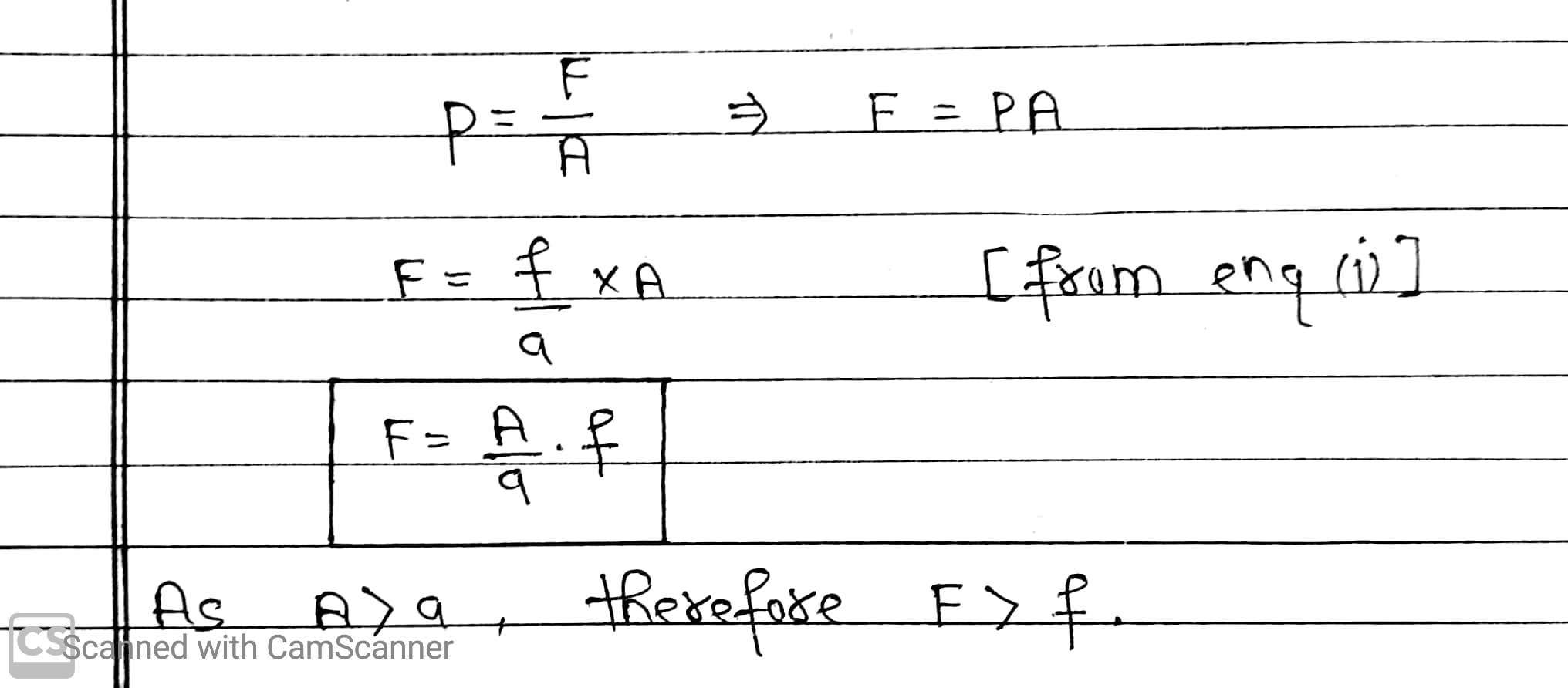Pascal’s law state that, whenever external pressure is applied on any part of a fluid contained in a vessel at rest, it is transmitted undiminished and equally in all directions.
This is the Pascal’s law for transmission of fluid pressure and has many applications in daily life.
Applications Of Pascal’s Law
(I) Hydraulic Lift
Hydraulic lift is an application of Pascal’s law. It is used to lift heavy loads. It is a force multiplier.
It consists of two cylinders C₁ and C₂ connected to each other by a pipe E. These cylinders are fitted with water tight frictionless Pistons of different cross-sectional areas. These cylinders and the pipe contain a liquid.

Let a downward force f is applied on smaller piston of cross sectional area a, then pressure exerted on the fluid,
P = f/a -(i)
According to Pascal’s law, this pressure P is transmitted to the larger piston of cross sectional area A, then upward force on larger piston C₂ is

This shows that the small forces applied on the smaller piston will be appearing as a very large force on the larger piston as a result of it a heavy load placed on the larger piston is easily lifted upwards.
(II) Hydraulic Brakes
The working of the hydraulic brakes is also on based of Pascal’s law.
It consist of a tube containing break oil. One end of the tube is connected to the wheel cylinder having two Pistons P₁ and P₂. The pistons P₁ and P₂ are connected to the brake shoes S₁ and S₂ respectively and the other end of the tube is connected to the master cylinder fitted with the piston P.

The piston P is connected to the break pedal through the liver system. The area of cross section of the wheel cylinder is greater than that of master cylinder.
Working Of Hydraulic Brakes
(I) When the break pedal is pressed, the liver system operates. The piston P is pushed. The pressure is transmitted to the Pistons P₁ and P₂ in accordance with the Pascal’s law.
(II) The Pistons P₁ and P₂ push the brake shoes away from each other. The brakes shoes press against the inner rim of the wheels and retard the motion of the wheel.
(III) Since, the area of the Pistons of the wheel cylinder is greater than the area of piston P, Therefore a small force applied to the brake pedal produces a large thrust on the wheels and hence the break becomes operative.
(IV) When the pressure on the brake pedal is released, the break shoes return to their normal positions by the action of spring which in turns force back the oil from wheel cylinder into the master cylinder.
(V) In order to apply equal pressure to all the wheels, the master cylinder is connected to all the wheels of the vehicle through tubes.
(VI) Hence, small force applied to the pedal exerts a much larger force on the wheel drums, which enables the driver to keep the vehicle under control.
